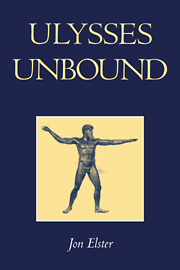III - Less Is More: Creativity and Constraints in the Arts
Published online by Cambridge University Press: 07 December 2009
Summary
INTRODUCTION
The French novelist Georges Perec wrote a novel, La Disparition, in which the letter “e” was nowhere used, and another, Les Revenentes, that did not use vowels other than “e.” Ernest Hemingway boasted that he could write a compelling short story in six words: “For sale. Baby shoes. Never used.” Also, in a science fiction story I once read the protagonist — a writer of fiction — meets an alien who gives him an “adjective magnet” he can use to clean up his stories. If he holds it at some distance, only the longest adjectives are lifted off the page. Held very close, it even takes monosyllabic ones. In between, presumably, there is a distance that would produce prose of optimal sparseness.
The e-less and e-only novels and the six-word short story are extreme examples of the more general idea that artists may impose constraints on themselves in order to create better works of art. In Perec's case, the constraints were entirely idiosyncratic. In other and more frequent cases the constraints take the form of conventions that define a particular genre. Although freely chosen, in the sense that it is up to the artist whether to submit to the laws of the genre, they are not invented by the artist.
- Type
- Chapter
- Information
- Ulysses UnboundStudies in Rationality, Precommitment, and Constraints, pp. 175 - 269Publisher: Cambridge University PressPrint publication year: 2000
- 1
- Cited by



